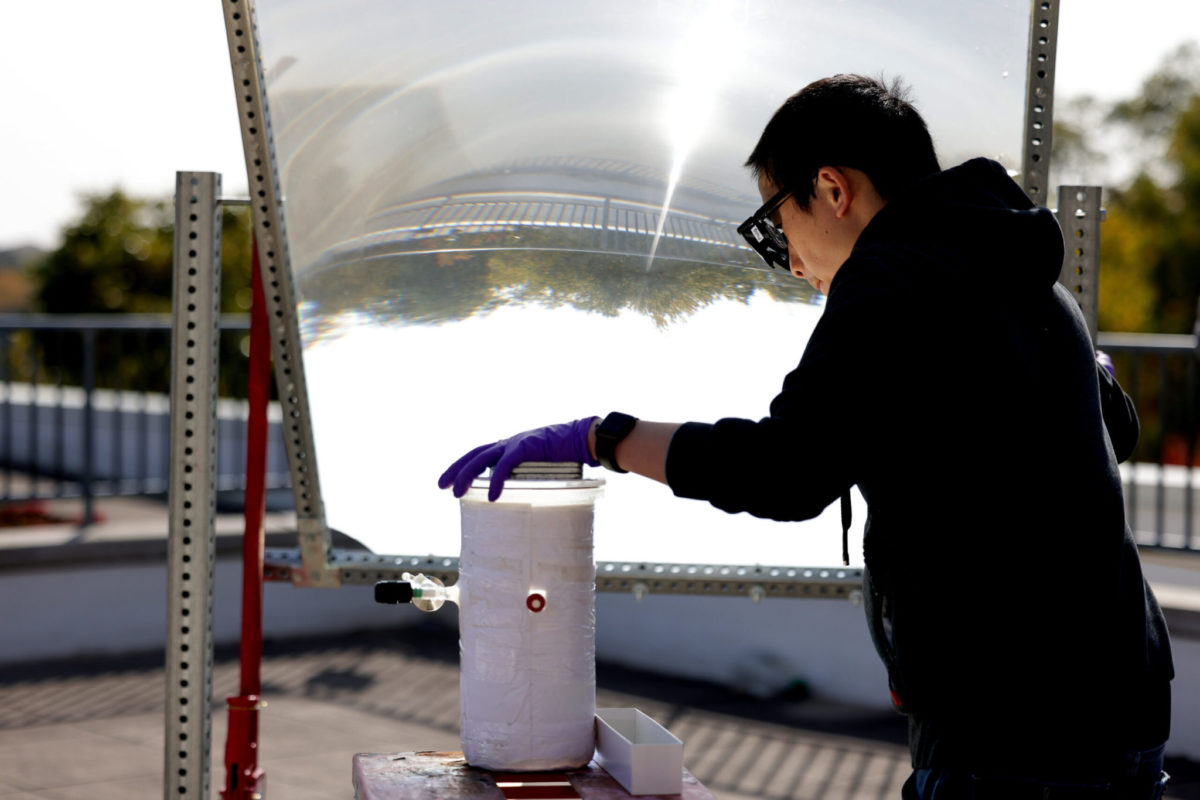“Green” hydrogen is the production of hydrogen fuels using emissions free generations sources like solar and wind energy. While renewables-charged battery-powered vehicles and power plants are expected to make up a large share of the energy transition, green hydrogen has garnered interest for heavy trucking and industrial use cases due it its ability to dispatch high amounts of power.
Production of green hydrogen typically takes the “indirect” approach using solar and wind to power electrolyzers. These electrolyzers have reached efficiencies of around 30%.
A research team at the Helmholtz-Zentrum Berlin (HZB) Institute for Solar Fuels is investigating another pathway to emissions-free hydrogen production through a process they call the “direct” approach. The approach is outlined in a Nature Communications article.
The team is developing photoelectrodes that convert sunlight into electrical energy, are stable in aqueous solutions, and catalytically split water into hydrogen. The photoelectrodes are coupled with catalyst materials, creating the active component in a photoelectrochemical (PEC) cell.
Today, the best PEC cells are able to achieve efficiencies near 10% and are made of low-cost and relatively stable metal oxide absorbers. Though they are significantly less efficient than their indirect green hydrogen counterparts, PEC cells have some advantages. The heat from the direct sunlight can be used to further accelerate reactions. And, since the densities range ten to 100 times lower with this approach, more abundant and inexpensive materials can be used as catalysts, said the researchers.
Despite these promising elements of the PEC approach, techno-economic analysis and net energy analysis have shown that it is not yet competitive with the conventional green hydrogen production approach. Hydrogen fuel from PEC systems costs about $10 per kg, about six times more than “blue” hydrogen from fossil methane steam reforming at $1.50 per kg. Also, cumulative energy demand for PEC water splitting is estimated to be four to 20 times higher than for hydrogen production with renewable energy and electrolyzers.
Despite this gulf in cost efficacy between the approaches, the research team at HZB Institute is testing other potential benefits of PEC. The group tested the effects of how the hydrogen produced reacts further with itaconic acid in the same reactor to form methyl succinic acid (MSA). MSA is another chemical fuel that can be used to dispatch high amounts of energy like hydrogen.
The PEC technology enables MSA to be produced at only one-seventh of the typical energy requirement of MSA fuel production processes.
To find this, researchers calculated how much energy is needed to produce the PEC cell from light absorbers, catalyst materials and other materials such as glass, and how long the system must function to produce this energy in the form of chemical energy as hydrogen or MSA.
For hydrogen alone, the energy payback period is about 17 years when assuming a modest 5% solar-to-hydrogen efficiency. If only 2% of the hydrogen produced is used to convert itatonic acid into MSA, the energy payback time is halved. If 30% of the hydrogen is converted into MSA, the production energy can be regained after just 2 years.
“This makes the process much more sustainable and competitive,” said Dr Fatwa Abdi, HZB Institute for Solar Fuels.
“This approach offers a way to significantly reduce the production cost of green hydrogen and increases the economic feasibility of PEC technology,” Abdi says. “We have carefully thought through the process, and the next step is to test in the laboratory how well the simultaneous production of hydrogen and MSA works in practice.”
This content is protected by copyright and may not be reused. If you want to cooperate with us and would like to reuse some of our content, please contact: editors@pv-magazine.com.









By submitting this form you agree to pv magazine using your data for the purposes of publishing your comment.
Your personal data will only be disclosed or otherwise transmitted to third parties for the purposes of spam filtering or if this is necessary for technical maintenance of the website. Any other transfer to third parties will not take place unless this is justified on the basis of applicable data protection regulations or if pv magazine is legally obliged to do so.
You may revoke this consent at any time with effect for the future, in which case your personal data will be deleted immediately. Otherwise, your data will be deleted if pv magazine has processed your request or the purpose of data storage is fulfilled.
Further information on data privacy can be found in our Data Protection Policy.